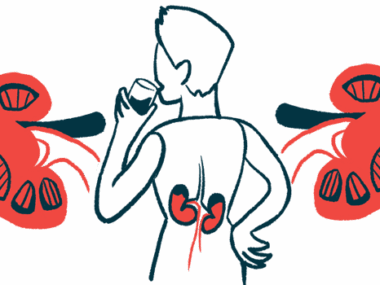Soliris Effective for 2 Patients With Both aHUS and C3G
Written by |

Soliris (eculizumab) can effectively treat patients with both atypical hemolytic uremic syndrome (aHUS) and C3 glomerulopathy (C3G), two disorders that are known to impair kidney function, according to a case report.
The study, “Efficacy of Eculizumab in Coexisting Complement C3 Glomerulopathy and Atypical Hemolytic Uremic Syndrome,” was published in the journal Kidney International Reports.
aHUS is a rare disease characterized by the formation of blood clots in the glomeruli (small blood vessels of the kidneys), which may result in hemolytic anemia (red blood cell destruction), low platelet counts, and kidney failure.
The disease is caused by the dysregulation of the alternative pathway of the complement system, which is part of the body’s immune system. In most people with aHUS, the disease is associated with an underlying mutation, an acquired defect, or both, in a component of the complement system.
Like aHUS, C3G is a disease that mainly affects the kidneys and is caused by the dysregulation of the complement pathway. In people with C3G, the uncontrolled activation of the complement system leads to the formation of deposits made up of C3, a complement protein, in the kidneys’ glomeruli.
The disease may be further classified as either C3 glomerulonephritis or dense deposit disease (DDD), depending on the density of the C3 deposits found in the kidneys.
Here, investigators in Italy described the cases of two boys who were diagnosed with both aHUS and C3G and were successfully treated with Soliris, a complement inhibitor developed by Alexion that is currently approved to treat adults and children with aHUS in the U.S. and Europe.
First they described the case of a 9-year-old boy whose blood C3 levels (15 mg/dL) were considerably below the normal range (90–180 mg/dL).
At age 12, he was admitted to the hospital with proteinuria (high concentration of proteins in the urine) and persistently low C3 levels. A tissue examination performed following a kidney biopsy revealed the presence of several features that were consistent with the diagnosis of C3G.
The boy was treated with oral prednisone, achieving complete remission within two months. The following year, he was diagnosed with coexisting DDD and glomerulonephritis (inflammation of the glomeruli). Treatment with methylprednisolone, followed by prednisone and an immunosuppressant, was begun.
Two weeks later he was re-admitted to the hospital due to severe hypertension (high blood pressure) and seizures requiring intensive care. While in the hospital, his anemia worsened, and he continued having abnormally low platelet counts, along with severe hemolysis (red blood cell destruction).
Another kidney biopsy performed at the time found several signs that were consistent with the presence of aHUS. He started being treated with Soliris, along with prednisone and an immunosuppressant, and began showing signs of improvement almost immediately.
The patient achieved remission after four months on Soliris, with persistently low C3 levels. Prednisone was tapered over nine months and Soliris was discontinued after one year. He remains in complete remission to date (19 months after receiving his last Soliris infusion).
The second case researchers described a 6-year-old boy who was hospitalized with acute kidney injury, anemia, low platelet counts, and elevated hemolysis. As his condition worsened, he underwent kidney dialysis.
Physicians suspected the boy might have aHUS and treated him with Soliris. His kidney function improved rapidly not long after treatment began.
A kidney biopsy and blood tests performed afterward revealed the presence of several features consistent with C3G. He then was treated with methylprednisolone.
Complete remission was achieved within four months, with normal C3 levels reached after 10 months. Prednisone was tapered over six months and Soliris after one year. At age 11, and four years after his last Soliris infusion, the boy remains in remission.
“At last follow-up, both patients were in complete remission, having discontinued eculizumab therapy. These findings suggest that eculizumab, in addition to being effective in treatment of aHUS, may also be effective in the rare cases of coexisting C3G or aHUS,” the researchers wrote.
One of the study’s researchers received consulting/advisory fees from Alexion, Achillion Pharmaceuticals, Novartis, and F. Hoffmann-La Roche AG that covered travel expenses or financed a patient nonprofit organization.




